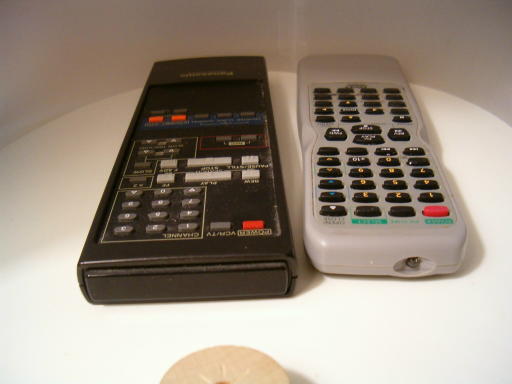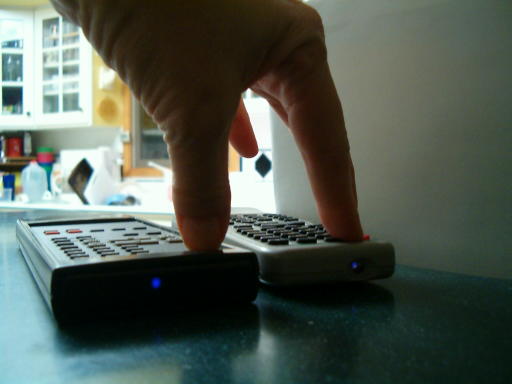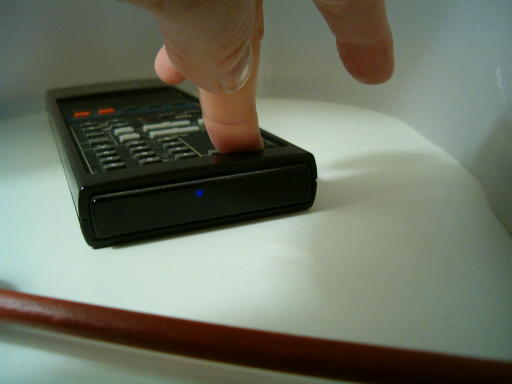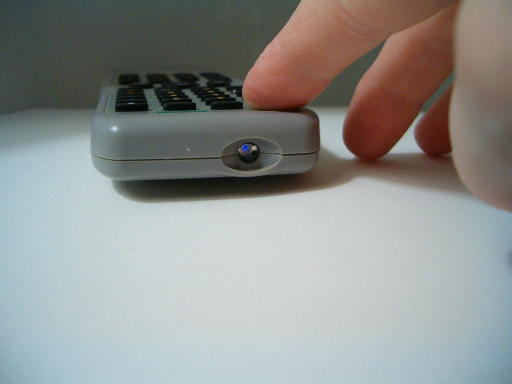

|
|
||||
Feature Articles: Alien Abductions, Cattle Mutilations, Conspiracies, Roswell, UFOsHow to Prove Your Camera Really Photographs More Than You Can See
Professional photographers have been writing to this website for years insisting our claim the camera sees more than the human eye is not true. That belief is scientifically false.
In order to put an end to this photographic myth, here is a lab test photographers and interested people can do at home to prove that your camera really photographs more than you can see.
1. Get the handheld remote control device you use for your TV, DVD, VCR, or other electronic appliance. While it is powered off, you will not not able to see any light coming from the end such as in the picture below.
2. From a side view for safety, position yourself to watch the front end of the handheld remote control device where the LED light beam comes out. Now click the power button on and hold it on while you observe the device from the side. You still cannot see the LED light that turned on the TV, DVD, or VCR.
3. Now, turn on your digital camera and from a side view, observe the remote control being powered on. Watch yourself click the power button on through your digital camera's LCD screen. You will now be able to see the LED light coming out of your remote control and you can photograph it as in the picture below.
Can you see the dots of blue LED lights that turned on in the picture above? Be careful not to point the LED light into your eye or into your camera. Now you can take a picture of the LED light which your camera sees.
The early handheld remotes of the 1980s and 1990s used a red LED and had to be pointed directly at an exact spot on the electronic appliance. This typically involved waving the remote control in the air to get the appliance to turn on because the red LED light wave was too short to reach the appliance.
Today's remote controled electronic devices use a blue LED light which makes it easier to turn on the electronic appliance. This is the blue light you see through the camera's LCD screen or if you take a picture of the handheld remote.
The blue LED is located in the ultraviolet (UV) light range which is considered invisible to the human eye or at least very difficult to detect unless using something that fluoresces. The infrared light range, also known as the IR light range, is where orbs, energy fields, and ghostly apparitions are speculated to reside. The IR light range is also invisible to the human eye.
The human eye can see light in the visible light range which is located inbetween the UV light range (the blues) and the IR light range (the reds). Remember Roy G. Biv from science class with the light spectrum of red orange yellow green blue indigo and violet? Your camera, especially your digital camera, has a wider light range than you human eye. This is why your camera photographs these energy fields which you did not see when taking the picture.
However, camera manufacturers do not want customers photographing into the IR light range for a variety of reasons, including the adverse impact the camera will have on the focusing or color found in the pictures. Most people are unaware their cameras are manufactured with an anti-IR filter that covers the lens to limit photographing into the IR light range.
However, most digital cameras still have some ability to see into this light range to varying degrees. The serious UFO hunter might want to investigate the spectral transmittance response of the camera before attributing strange images to spectrums the camera has no response at those wavelengths or cannot see them.
Some professional photographers use special IR filters in their black and white or sepia photographs to intensify the trees, sky and clouds. The images are almost surrealistic as they transcend the picture in a haunting 3-D effect.
The 35 mm film cameras are able to see and photograph a smaller portion of the infrared light range and this is why UFOs, energy fields and orbs still show up in older photographs to a lesser degree.
Different cameras yield different results and the UFO researcher may want to have the IR filter professionally removed from the camera. Aside from forensic teams which often use IR cameras in their investigative work, the serious amateur may want to invest in an IR camera for paranormal or UFO hunting research.
This is why so many people take pictures and later notice a UFO in the sky which they insist they did not see while taking the picture. The truth is, they didn't, because the UFO being photographed was in the invisible light range to the human eye.
|
Alien Abduction Experience and Research
Copyright ©1996 - 2019. All Rights Reserved.



